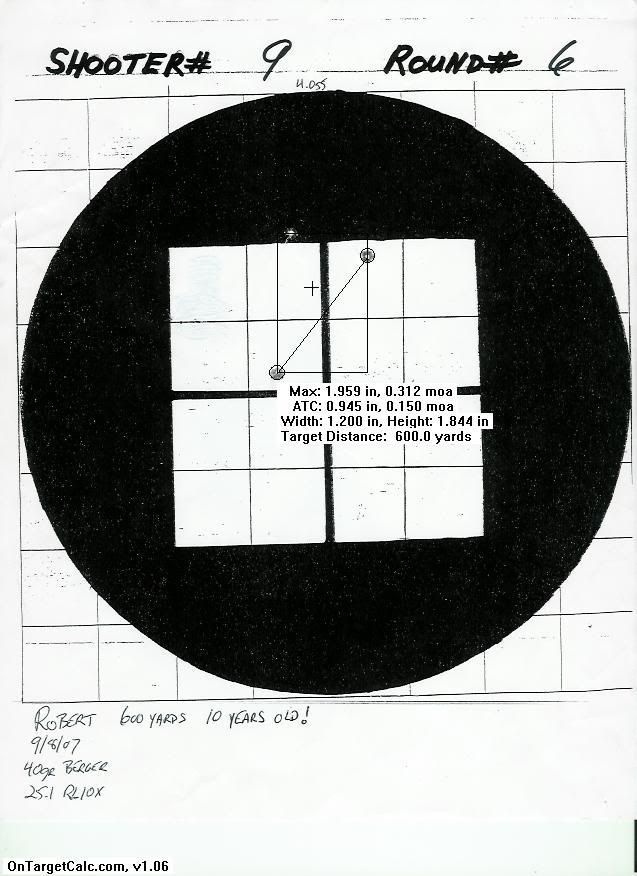heikki
I have to admit I never tried much primer switching until just recently. I was amazed at the difference a primer switch could make in all my loads not just the 204.
I just shot an Audette ladder yesterday with my new tube and 39bk's. This morning I shot five rds of each in the two nodes I found. Pretty much looks like your group but with fewer holes.

Before I do any powder/seating changes I'm going out this afternoon with the different primers

I'll pick the best primer first then begin tweaking the load from now on.
I guess I always figured if I developed a load with a certain primer thats as good as it was gonna get. I was wrong.
FWIW thats the type of groups I always get with the 39bk's at 200. I haven't really gone out of my way to force them to shoot though. I usually find a load quickly with Bergers that out shoots the 39's.
Add to that the fact most of my old barrels would blow up the 39's and bullets not reaching the target is something I cannot tolerate.
I've found seating depths can help change both horizontal and vertical. Not as much in the 204 with its long jump to the lands but it can be easily seen in any rifle loading near or in the lands.
Most shooters hate vertical. I love it seeing a straight vertical line on the target. Straight vertical on the target and push the pill .005 closer/deeper into the lands and the vertical disappears. The 204 does not usually live by the these rules though.
WW
Run a search on Benchrest Central, other forums or plain old Google on "sleeping bullets" and you should be busy awhile.
I seem to recall links to articles explaining theories on the subject.
For me anyway logic dictates it just can't happen.
I might be able to fathom the yaw being greater at close range then settling down but that can't have a positive effect on group size at any range. Negative effect maybe.
I do recall someone using an arrow as an example of increased yaw at close range. (heikki, you still paying attention)
Now I've seen arrows wobble/yaw coming out of my compound bow that settle down in flight.
Of course I can't hit a barn with an arrow. Haven't pulled it off the wall in fifteen years. Arrows are to darn expensive nowadays to be losing them like I do.

?????heikki??????








